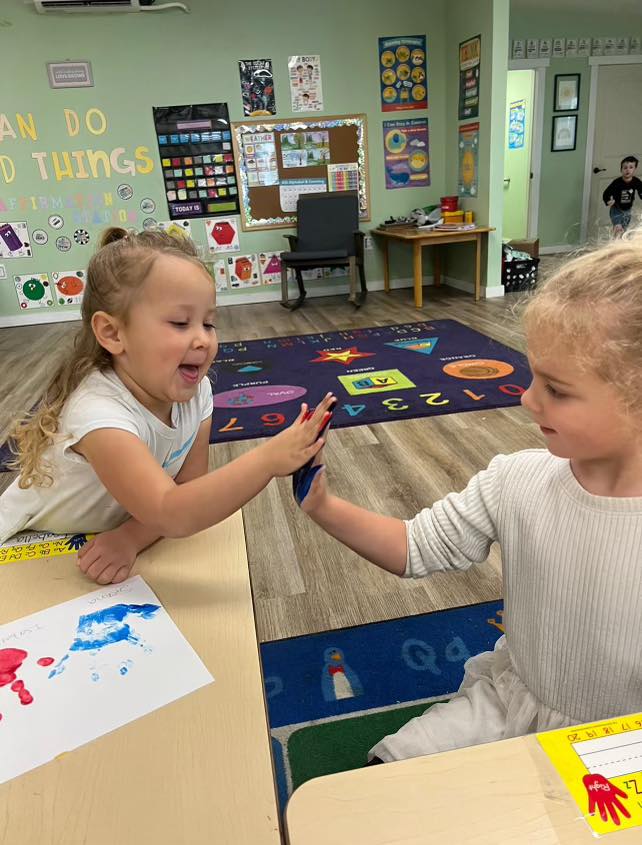Creating Consistency: Bridging Home and Daycare Routines
Every parent knows that moment when their cheerful morning routine suddenly crumbles the second they mention daycare. Your child, who was happily eating breakfast just minutes ago, now clings to your leg with tears streaming down their face. You’re not alone in this struggle. At Children’s Learning Station, we’ve witnessed countless families successfully navigate this challenge by implementing strategic consistency practices that honor both home preferences and educational goals. The result? Children who transition between environments with confidence, parents who feel more at ease, and educators who can build upon the strong foundation you’ve created at home.
Research from the American Academy of Pediatrics shows that children who experience consistent routines across different environments demonstrate 40% less separation anxiety and show improved emotional regulation throughout their day. The key lies in creating bridges between your home routines and your daycare’s schedule, allowing your child to feel secure and confident in both environments.

Understanding Your Child’s Need for Predictability
Children thrive on routine because predictability creates a sense of safety and control in their world. When routines differ dramatically between home and daycare, children often experience what child development experts call “environmental whiplash” – the stress that comes from constantly adapting to different expectations and schedules.
Dr. Sarah Chen, a developmental psychologist specializing in early childhood transitions, explains that consistent routines help children develop what she terms “environmental confidence.” This confidence allows children to focus their energy on learning and social development rather than constantly trying to decode new expectations.
The Science Behind Routine Consistency
Recent studies in early childhood development reveal that children who experience aligned routines between home and childcare settings show measurably better outcomes in several key areas. These children demonstrate improved attention spans during structured activities, engage more readily in social interactions with peers, and display fewer behavioral challenges during transition times.
The neurological explanation is fascinating yet straightforward. When routines remain consistent across environments, children’s brains can allocate more resources to learning and development rather than processing environmental changes. This neurological efficiency translates into real-world benefits that parents and educators observe daily.
Creating Your Consistency Framework
The most effective approach to bridging home and daycare routines involves identifying your non-negotiables while remaining flexible about implementation details. Your child’s bedtime routine might look slightly different at daycare during naptime, but the core elements – quiet time, comfort items, and gentle transitions – can remain consistent.
Start by having an open conversation with your child’s educators about your current home routines. Share what works well for your family and ask about the daycare’s established practices. Often, you’ll discover more common ground than you initially expected, making the alignment process much simpler than anticipated.
Morning Transitions That Set the Stage
Morning routines deserve special attention because they set the emotional tone for your child’s entire day. When your morning routine at home mirrors the calm, structured beginning your child experiences at daycare, you create a seamless emotional bridge that supports confidence and reduces anxiety.
Consider incorporating elements from your daycare’s morning circle time into your home routine. This might include singing the same welcome song, reviewing the day’s activities, or engaging in similar physical warm-up movements. These small consistencies signal to your child that both environments value structure and predictability.
Practical Strategies for Success
Communication remains the cornerstone of successful routine alignment. Regular check-ins with your child’s teachers provide opportunities to adjust strategies based on what’s working and what needs refinement. Remember that creating consistency is an ongoing process rather than a one-time fix.
Your child’s age and developmental stage will influence which elements of routine consistency matter most. Toddlers might benefit most from consistent meal and nap schedules, while preschoolers often respond well to aligned behavioral expectations and problem-solving approaches.
Navigating Common Challenges
Every family encounters obstacles when implementing routine consistency, and acknowledging these challenges helps normalize the process. Some children initially resist changes to established routines, even when those changes ultimately benefit them. Patience and gradual implementation often prove more effective than dramatic overnight shifts.
Weekend routines offer excellent opportunities to practice daycare-style structures in the comfort of your home environment. Try incorporating your daycare’s cleanup songs or transition signals into your weekend activities. This practice helps reinforce the routines while giving you insight into how your child responds to different approaches.
Supporting Your Child’s Individual Needs
While consistency provides important structure, remember that your child’s individual temperament and needs should guide your approach. Some children require more transition time between activities, while others thrive on quicker shifts. Work with your daycare team to identify your child’s specific needs and preferences.
Children with sensitive temperaments often benefit from detailed advance preparation about routine changes. Creating simple visual schedules that show both home and daycare routines can help these children feel more secure about expectations in different environments.
Building Long-Term Success
The investment you make in creating routine consistency pays dividends well beyond the early childhood years. Children who learn to navigate consistent expectations across environments develop stronger adaptability skills, improved emotional regulation, and greater confidence in new situations.
Remember that perfect consistency isn’t the goal – thoughtful alignment is. Your home environment will always have unique elements that differ from daycare, and that’s perfectly healthy for your child’s development.
Creating harmony between home and daycare routines transforms daily transitions from sources of stress into opportunities for connection and growth. Your child deserves the confidence that comes from predictable, nurturing routines, and your family deserves the peace of mind that accompanies smooth daily transitions. Contact Children’s Learning Station today to discuss how we can work together to align our routines with your home practices, setting your child up for success in both environments.
